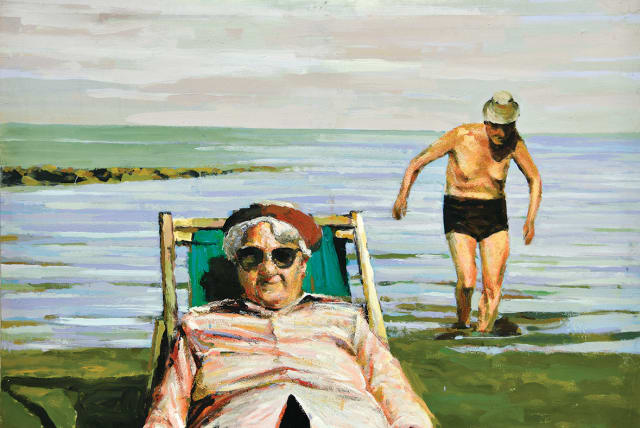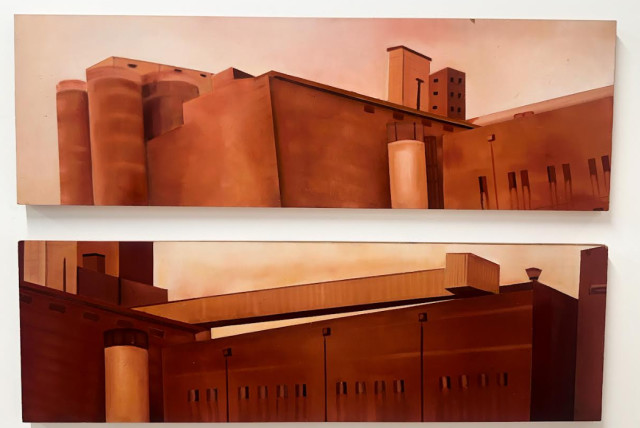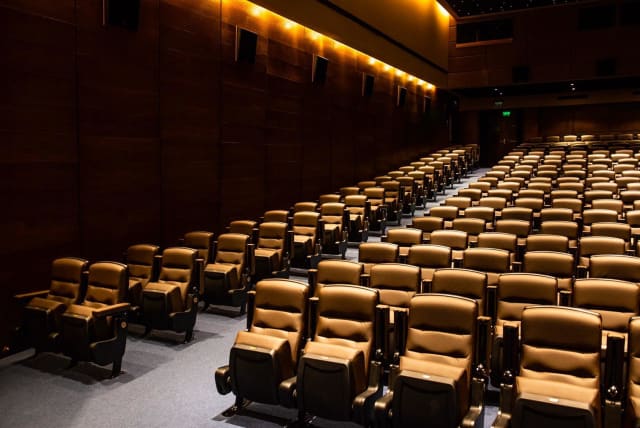
As we know only too well, there is ne’er a dull moment in these here parts. As wearying as that may be, those tumultuous political and cultural events provide plentiful grist to the creative mill. That much is patently clear over at the Art Cube Artists’ Studios in Talpiot, which is currently officially marking its 40th anniversary with an extensive exhibition documenting some of the artistic milestones of the past four decades.
The “official” epithet does not sit too accurately with the chronological facts on the ground. “Actually, the Artists’ Studios was established in 1982, that’s 42 years ago,” notes director Lee He Shulov with a smile, just in case my arithmetic skills are not quite up to scratch. The reasons behind the delay are pretty obvious. “We’ve had a lot to deal with over the past four years,” she adds somewhat superfluously.
But now, at last, the pandemic shenanigans are over and cultural life is largely back on track, despite the seemingly endless military matters in Gaza and the North. The “HaUman 26” showcase of the last four decades of local artistic derring-do is well and truly underway. Shulov took on the artistic director role, with Hillie Wurtman Moyal and Dveer Shaked doing a fine job on the curatorial side.
A pioneering Jerusalem art enterprise celebrates four decades
The Art Cube Artists’ Studios – aka Artists’ Studios – is a definitively pioneering enterprise. The center was established in 1982 by the Jerusalem Foundation and legendary curator Yona Fischer as the first complex of its kind in Israel where artists could work in designated workspaces at subsidized prices. The goal was to encourage the practice of art in Jerusalem.
Judging by the current roll-out, not to mention the numerous exhibitions that have been hosted there over the years, and the ongoing earnest creative endeavor sustained by burgeoning artists who get to hone their skills from their individual studio berth there for a period of time, that objective is being achieved with aplomb. And there is the annual Manofim Festival of Contemporary Art, initiated by Shulov and Rinat Edelstein, which has been a major event on the Jerusalem – and annual – arts calendar for the past 16 years. In short, the Jerusalem, and national, art scene would be much the poorer without the Artists’ Studios.
The aforementioned local history is very much interwoven into the seam of the artistic subtext on display in Talpiot. “The works we have here now are fueled by events in Jerusalem and also by local history in general,” Shulov explains. “I think that is something which strongly characterizes the artists who create in this city.”
Shulov took the logical neatly structured route to the presentation format. “The works are divided up into the various decades,” she says. “You can see the development of art here through that.” While, naturally, you cannot place clinically precise demarcation lines between the 10-year batches, Shulov feels there are current affairs pointers to local artistic output.
“I think you can see the influences. In the 1990s, for example, there was a lot of hope for regional peace, and there have been artists here who sought, and achieved, links with Palestinian artists at some junctures. There have been trends driven by political developments.”
“HaUman 26” (the exhibition moniker comes from the Studios’ address in Talpiot) is a major event, in both qualitative and quantitative terms. All told, there are a whopping 100 exhibits in there, which include paintings, sketches, sculptures, mixed media items, and video works.
The cast list features a cross-generational roster with the likes of 79-year-old Dudu Gerstein; fellow septuagenarians Yitzhak Livneh; South African-born Larry Abramson; internationally renowned US-born Gary Goldstein; and 81-year-old Pinhas Cohen Gan.
The middle generation is also well represented, with short-video artist Sharon Balaban; 47-year-old Avi Sabbah – one of the founders of the frontier-pushing Barbur Gallery; and Shai Azulai. True to the Artists’ Studios’ credo, the younger crowd also gets several shouts in the exhibition, with contributions by recent and current studio occupants Argentinean-born video artist Gaston Zvi Ickowicz; video and installation creator Neta Moses; painter Hanita Ilan; and sound artist-ecologist Niv Gafni.
THE ANNIVERSARY spread, says Shulov, evolved from a personal quest to find out what makes the center, and its artistic and socio-political core, tick. “The whole idea for this exhibition stemmed from my search for the archives of this place. I came here as an artist in 2006. But it was impossible to know what went on here in the past.
“It was clear that there had been plenty going on, but there was no documentation about any of that. I want to discover who had been here, and I assumed there had been all sorts of interesting collaborations between the artists.”
That is very much part and parcel of the Artists’ Studios’ line of thought. “Pamela Levy, for example, took works by Larry Abramson, [71-year-old painter and sculptor] Asaf Ben Zvi, [74-year-old painter and sculptor] Gabriel Klazmer, and others, and painted their portraits. That was an exhibition that was later shown at the Herzliya Museum of Contemporary Art.” That was after Levy had benefited from a studio slot at the Talpiot complex.
Shulov says the studio facility’s role as a hub and interface, where artists can encounter each other and, crucially, each other’s output, is of paramount importance to the creative continuum. She knows that from her own personal experience. “When I came here as an artist, I looked for a milieu in which I could work. I didn’t want to just be in my studio, alone with myself, detached from everyone around me. It is important to interact.
“As a studio facility, you can meet with other artists during your coffee break, chat, see each other’s work informally, and exchange ideas. That is the most important thing that can happen – to create a community among the artists.”
The proof of that pudding is evident. “A lot of the artists in this exhibition talked about how significant this place was for them, and how well they remember the impromptu encounters with other artists in the corridor,” Shulav adds. “There [in the Artists’ Studios’ previous premises on Yad Harutzim Street], they’d meet up on the balcony looking out on Bethlehem.
“I remember chatting with people like Shai Azulai and [Jerusalemite painter] Amnon Ben Ami, and there were others who had studied with me at Bezalel, and the Barbur Gallery grew out of here.”
IN TRUTH, the Jerusalem art scene has been buzzing for some years now. That is due, in no small part, to the sterling work of the Artists’ Studios, which has helped to keep Bezalel Academy of Arts and Design graduates here and, according to Shulov, even tempted former Jerusalemites who relocated to Tel Aviv in search of better living and working conditions to return back east along Route One.
The center is also investing in laying the groundwork for future generations to take on the creative torch and keep the Jerusalem art scene pulsating and evolving. “We do educational activities, like inviting kids here for informal sessions and workshops,” Shulov explains. “We also go out to the public domain. We also felt it was important to establish a bilingual – Hebrew and Arabic – line of activities.”
I got a palpable sense of the capital’s cultural and socio-political melting pot, and the Artists’ Studios role in that, when I joined Shulov on the building’s expansive roof. Much of the sprawling ethnic, cultural, and socio-economic hodgepodge of this ever-expanding capital spread out around me. We could see buildings over in Beit Safafa, with a couple of mosque domes to the east, the rear of the Katamonim and Old Katamon, San Simon, and Rehavia beyond, and the morphing industrial mass of Talpiot as it undergoes constant structural makeovers.
Shulov has big plans for the rooftop, with programs of events, festivals, music, and good old get-togethers lined up for the not too distant future. “You get the vibe of everything around you here,” she observes. “That finds its way into the work the artists produce here. That is an inseparable part of what this place is all about.”
While that plan gathers pace, there is plenty to see in the “HaUman 26” exhibition, which charts the spirit, life, and times of this fascinating, ancient, troubled, and compelling city. As the exhibition information about the works from the past decade notes: “Many of the artists working in the Studios were directly impacted by the crises, and many of the works made during the ’20s express the pain and difficulty or reflected precisely the power of art during these moments to provide hope, inspiration, and breathing space.”■
The exhibition closes on June 22. For more information: www.artiststudiosjlm.org and (02) 679-7508








































































































